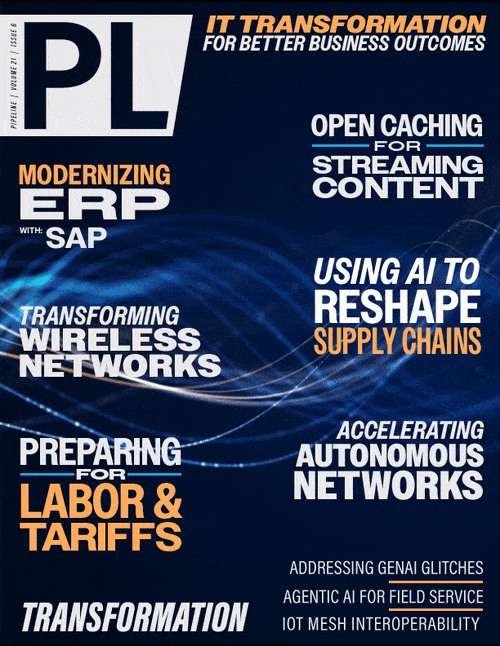Why the Automated Network is the Platform
for Digital Transformation
By: Jeff Gray

In our 24/7 always-on world, networks have become the lifeblood of business, driving how we work, operate, and communicate. Much like the revolutionary impact of cars and mass transit on our physical landscape, networks shape our digital realm, underpinning every aspect of our increasingly connected lives. As the backbone of our digital infrastructure, networks are now as crucial as any physical utility, powering innovation, commerce and communication across industries and continents.
However, this digital revolution brings unprecedented challenges. The operational and technological complexities of modern networks have reached a critical juncture, intersecting with ever-growing cybersecurity risks. The sheer scale and intricacy of these systems have outpaced human capability to manage them effectively, creating a new world order where traditional approaches fall short. We're now at a point where conventional networks are hitting a wall, and issues are starting to compound.
Enter the automated network, the transformative solution and critical platform for digital transformation in modern enterprises. By harnessing software and advanced technologies, automated networks streamline routine tasks in network management, eliminate exposures, prevent outages, and ensure that organizations maintain compliance, offering a lifeline to organizations grappling with complex, dynamic network infrastructure.
What Exactly is an Automated Network?
An automated network is more than just a collection of scripts or point solutions; it's a cohesive, multi-vendor, multi-platform, multi-domain system built on several core principles. It utilizes a central management plane to orchestrate and automate tasks across the entire network infrastructure, regardless of vendor or technology. This removes the need for device-by-device configuration and enables consistent policy enforcement. Automated networks continuously monitor the state of the network, detect deviations from the desired state, and automatically take corrective actions, ensuring that the network remains compliant and performs optimally.
The Five Stages of Network Transformation Maturity
To achieve this level of automation, organizations typically follow a structured approach to network transformation. Here is a five-stage maturity model that outlines this journey:
Stage 1: Discover
- Source of Truth: Establish a centralized repository of network data and configuration policies.
- Dashboarding: Implement real-time visibility into network status and performance.
- Explore Data: Analyze network data to identify patterns, inefficiencies, and potential improvements.
- People and Process: Train staff on discovery tools and establish processes for data collection and analysis.
- ITSM Connect Considerations: Integrate discovery data with ITSM systems for improved incident management.
Stage 2: Standardize
- Configuration Compliance: Ensure configurations are consistent and compliant with organizational policies.
- Operating System Management: Automate OS upgrades, patches, and downgrades at scale to enforce standard OS versions.
- People and Process: Establish change management processes and train teams on standardization practices.
- ITSM Connect Considerations: Align standardization efforts with ITSM change management workflows.
Stage 3: Remediate
- Configuration Modeling: Create declarative configuration policy models defining the desired network configuration state.
- Vulnerability Management: Automate security patches and updates to minimize exposure to known vulnerabilities.
- Automated Fixes: Anything that drifts from the standards in stage 2 gets detected and remediated along with notification before issues and exposures can occur.
- People and Process: Define escalation procedures and train staff on remediation tools.
- ITSM Connect Considerations: Integrate remediation actions with ITSM problem management workflows.



















